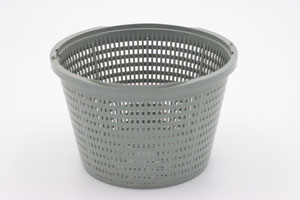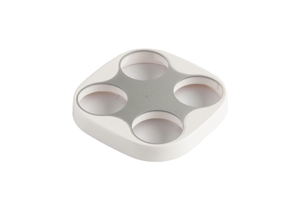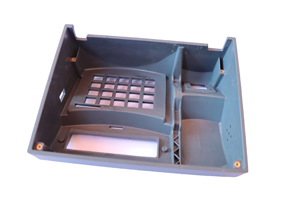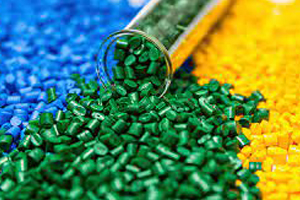The choice of plastic is a crucial step in the injection molding production process, affecting the quality, performance, and cost-effectiveness of the product. Therefore, we must select the appropriate plastic to ensure that the final product meets design requirements, can withstand environmental factors, and achieves the required mechanical properties. Below, we share three common plastics for injection molding and their characteristics.
Common Plastics for Injection Molding: ABS
ABS is one of the common plastics for injection molding, known for its excellent processability, aesthetic qualities, low creep, exceptional dimensional stability, and high impact strength.
Chemical and Physical Characteristics
ABS is synthesized from three chemical monomers: acrylonitrile, butadiene, and styrene. Each monomer has different properties: acrylonitrile provides high strength, heat stability, and chemical stability; butadiene offers toughness and impact resistance; styrene provides ease of processing, high gloss, and high strength. Morphologically, ABS is a non-crystalline material.
The polymerization of the three monomers produces a two-phase terpolymer: a continuous phase of styrene-acrylonitrile and a dispersed phase of polybutadiene rubber. The properties of ABS depend mainly on the ratio of the three monomers and the molecular structure in the two phases. This allows for great flexibility in product design, resulting in hundreds of different grades of ABS molding materials available on the market. These different grades provide various properties, such as medium to high impact resistance, low to high gloss, and high thermal distortion properties.
Typical Application Areas
Automotive (dashboards, toolboxes, wheel covers, mirror housings, etc.), refrigerators, high-strength tools (hair dryers, blenders, food processors, lawnmowers, etc.), telephone housings, typewriter keyboards, recreational vehicles like golf carts and jetskis.
Common Plastics for Injection Molding: PE
PE is one of the common plastics for injection molding with the following characteristics:
PE is a crystalline material with minimal moisture absorption, not exceeding 0.01%. Thus, it does not require drying before processing.
PE has good molecular chain flexibility and low intermolecular force, resulting in low melt viscosity and excellent flowability. Therefore, thin-walled, long-process products can be molded without high pressure.
PE has a wide range of shrinkage rates and high shrinkage values with noticeable directionality. LDPE has a shrinkage rate of about 1.22%, while HDPE has a rate of about 1.5%. Therefore, it is prone to warping and deformation, and mold cooling conditions significantly influence shrinkage rates. Thus, mold temperature should be controlled to maintain uniform and stable cooling.
PE has high crystallization capability, and mold temperature greatly affects the crystallization condition of the plastic parts. High mold temperatures lead to slow melt cooling and high crystallinity, resulting in higher strength.
PE has a low melting point but a high specific heat capacity, thus requiring considerable heat for plasticization. Therefore, the plasticizing device must have a significant heating power to improve production efficiency. PE has a small softening temperature range, and the melt is easily oxidized. Hence, contact between the melt and oxygen should be avoided during processing to prevent quality degradation.
PE parts are relatively soft and easy to demold. Therefore, when plastic parts have shallow side grooves, forceful demolding is possible. PE melt is not significantly non-Newtonian, and shear rate changes minimally affect viscosity. The viscosity of PE melt is also minimally affected by temperature. The cooling speed of PE melt is relatively slow, so adequate cooling is necessary. The mold should have a good cooling system.
If PE melt is injected using a direct gate, increased stress and uneven shrinkage may lead to noticeable directionality and increased deformation. Thus, gate parameters should be carefully selected.
PE has a wide molding temperature range, and slight temperature fluctuations in the flow state do not affect injection molding.
PE's thermal stability is relatively good, with no significant decomposition below 300 degrees, having no impact on quality.
Common Plastics for Injection Molding: PVC
Chemical and Physical Characteristics
PVC is a non-crystalline material. As one of common plastics for injection molding, PVC is often used with stabilizers, lubricants, auxiliary processing agents, colorants, impact modifiers, and other additives. PVC has flame resistance, high strength, weather resistance, and excellent geometric stability.
PVC is highly resistant to oxidizing agents, reducing agents, and strong acids. However, it can be attacked by concentrated oxidizing acids such as concentrated sulfuric acid and concentrated nitric acid and is also unsuitable for use with aromatic hydrocarbons and chlorinated hydrocarbons.
The melting temperature of PVC is a critical parameter in processing; incorrect settings can lead to material decomposition. PVC has poor flow characteristics, and its processing range is narrow.
Especially for high molecular weight PVC, processing is more difficult (this material usually requires lubricants to improve flow properties); hence, low molecular weight PVC is generally used. PVC has a low shrinkage rate, typically between 0.2~0.6%.
Typical Application Areas
Water pipes, household pipes, wall panels for houses, commercial machine housings, electronic product packaging, medical devices, food packaging, etc.










